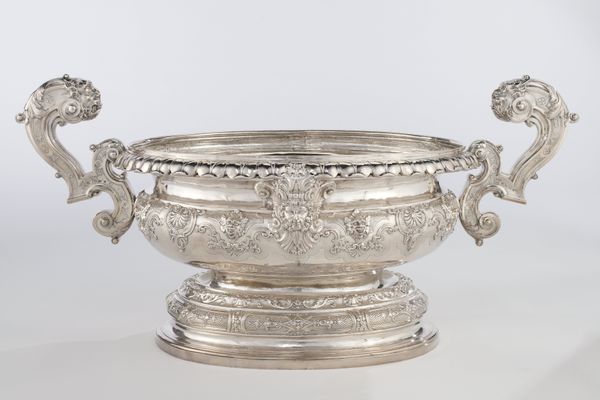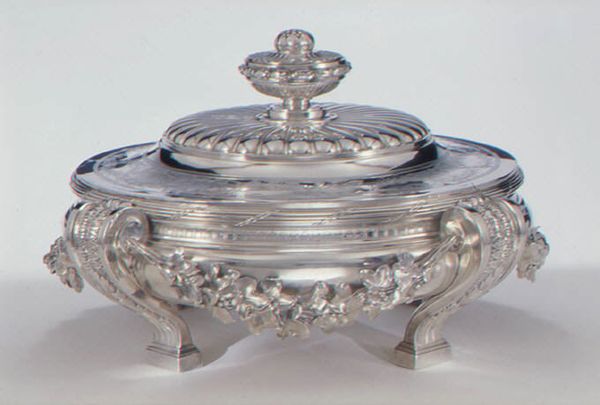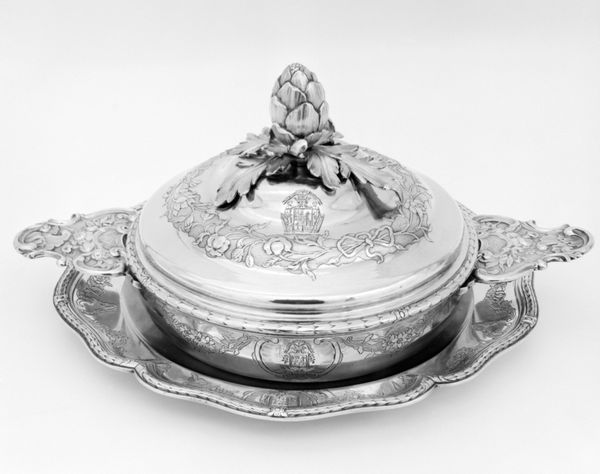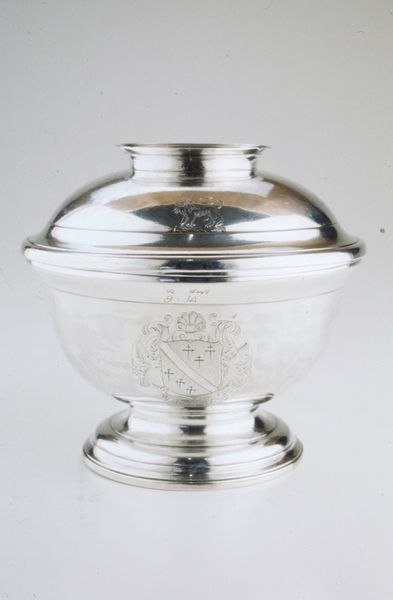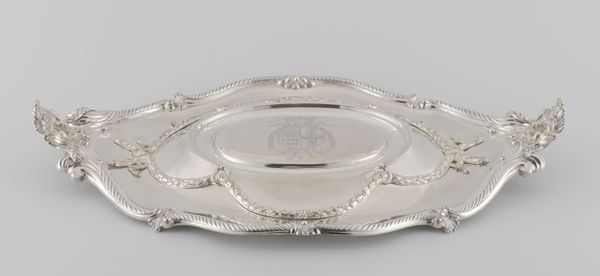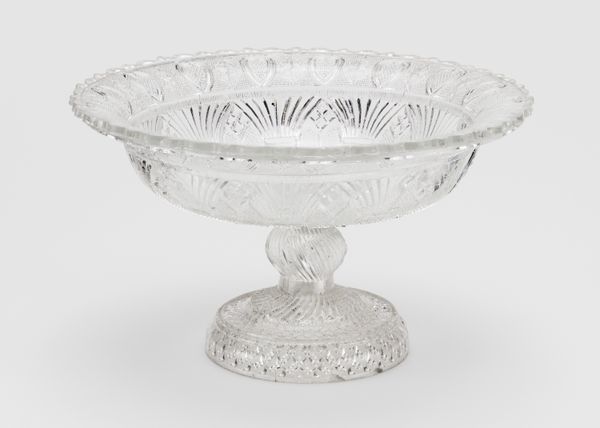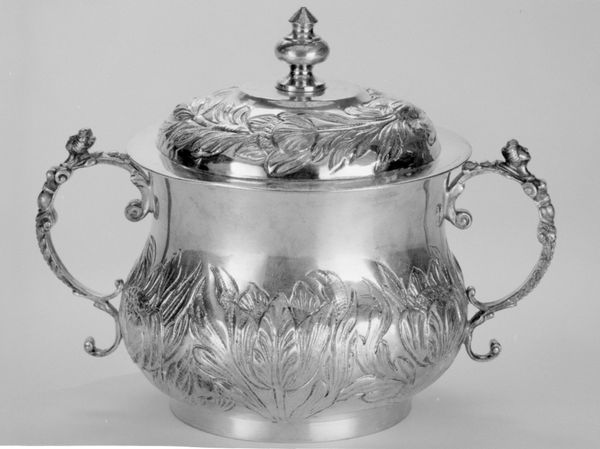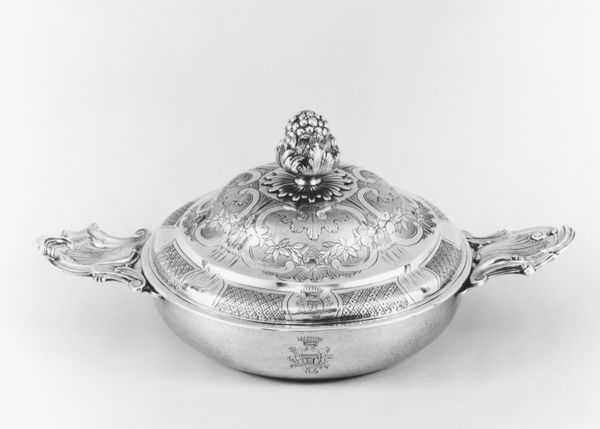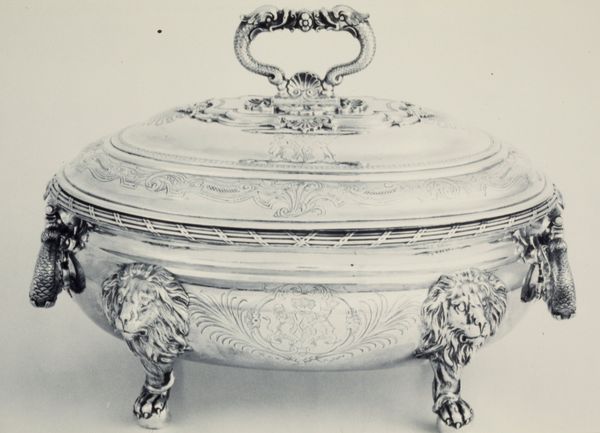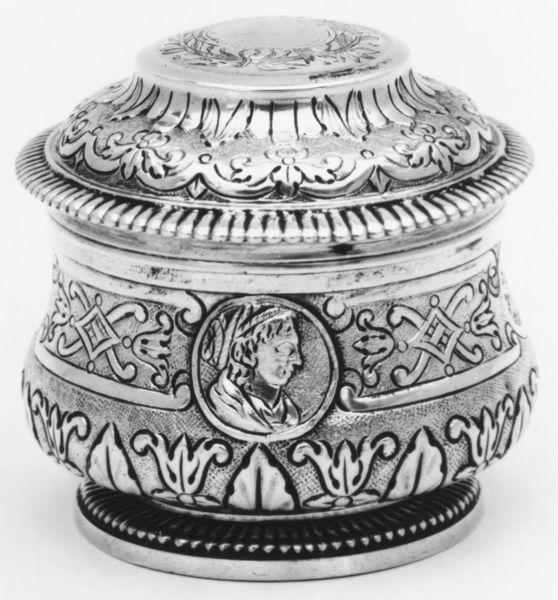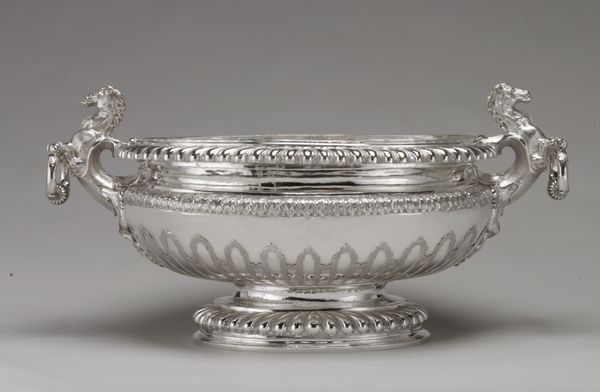
silver, metal, sculpture
#
silver
#
neoclassicism
#
metal
#
sculpture
#
sculpture
#
decorative-art
Dimensions: 3 3/4 x 9 1/2 x 9 1/2 in. (9.53 x 24.13 x 24.13 cm)
Copyright: Public Domain
Editor: We're looking at a Dish Ring from around 1790, crafted from silver. The Minneapolis Institute of Art is its current home. The intricate designs immediately catch the eye. What elements of form and structure define its elegance? Curator: Observe how the circular form dominates, a closed system of line and shape. The ring presents a clear tripartite division: base, neck, and lip, each demarcated by distinct decorative registers. The pierced floral medallions punctuate the surface, creating negative space that plays against the solid metal. Note the consistent repetition of motifs. Do you see how the regularity impacts the viewer's experience? Editor: Yes, the repeated patterns create a sense of rhythm and order. Does the symmetry influence how you view the sculpture? Curator: Precisely. The bilateral symmetry reinforces the inherent stability of the form. Each half mirrors the other, creating visual harmony. This emphasis on order is typical of neoclassicism. Furthermore, the craftsmanship suggests value but the repetition reduces the impression of uniqueness or genius, doesn't it? The sculpture’s materiality is interesting because while we have a seemingly functional work of art it remains only 'seeming.' Editor: That's a very astute point. It is visually appealing, yet slightly perplexing as to its real-world purpose. Curator: Think of how the linear arrangement—horizontal bands around the form—accentuates its inherent shape. This is formal language dictating aesthetic value. What began as possibly utilitarian rises into artistry. Editor: I now understand that there is so much more to this ring. Thank you. Curator: You're welcome. Thinking formally enriches our observation in art.
Comments
No comments
Be the first to comment and join the conversation on the ultimate creative platform.

